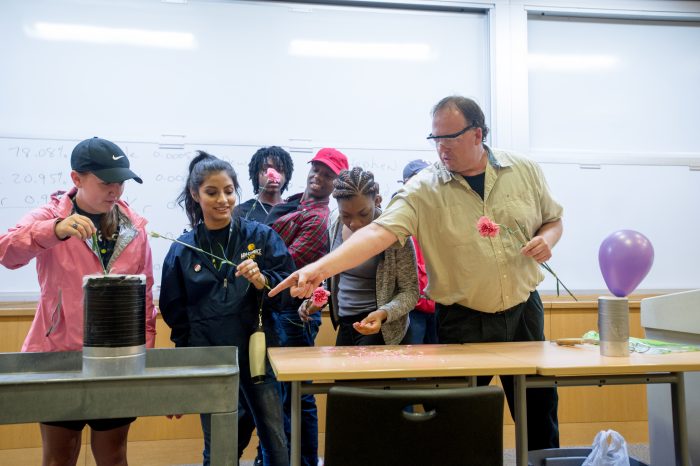
I like to understand the world around me at the atomic level. Chemistry allows me to understand how and why things work the way they do.
Stephen Starnes, Ph.D. Associate Professor
- Faculty

Faculty Senate
Stephen Starnes, Ph.D., is a native Texan from Littlefield, Texas. Having enjoyed chemistry since high school, he earned a bachelor's degree in chemistry and a doctorate in organic chemistry at Texas Tech University before moving to California to pursue post-doctoral studies at The Scripps Research Institute.
Starnes received his first professorship at New Mexico State University. He recalls that it took time to adapt to the rock gardens and desert living, but he quickly gained an affinity for the cuisine. Although he moved his family to Commerce to be closer to family, he still craves green chiles and New Mexico-style Chile Rellenos to this day!
As a member of the East Texas A&M Department of Chemistry, Starnes instructs students, conducts research and explores innovative ideas. He is passionate about helping others realize their potential, achieve their goals and better understand the world around them. He also enjoys traveling to experience culture and day-to-day life around the world.
A Conversation with Dr. Starnes
What would you tell a student who is thinking about attending East Texas A&M?
One of the main benefits of pursuing your education at East Texas A&M is getting to know all your professors. You are not one of the hundreds of students in a class. Small-to-moderate class sizes allow you to actively engage with faculty so your education is much more personal and focused on your individual needs and goals.
What draws you to your discipline?
I like learning chemistry and pursuing chemistry as a profession because I like to understand the world around me at the atomic level. Chemistry allows me to understand how and why things work the way they do.
What has been your favorite course to teach?
I am an organic chemist, so teaching organic chemistry is my favorite. Still, I love teaching general chemistry as well, since this is typically the first chemistry class a student will take. Teaching general chemistry allows me to help students realize that they can learn and succeed in chemistry. It allows me to show students how chemistry is important to their everyday life. I want to ensure our students get a great first impression of chemistry since most come into the class thinking they will not like chemistry or pursue it as a major. I enjoy changing their minds!
Tell us about a project you are currently working on or recently completed.
My main research interest is developing sensors and extraction agents for environmental pollutants.
Educational Background
- Postdoctoral, Molecular Recognition, The Scripps Research Institute, 1998-2000
- Ph.D., Organic Chemistry, Texas Tech University, 1998
- B.S., Chemistry, Texas Tech University, 1993
Academic Positions
- Associate Professor, Chemistry, East Texas A&M University, 2013-present
- Interim Head, Chemistry, Texas A&M University-Commerce(now East Texas A&M University), 2010
- Assistant Professor, Chemistry, Texas A&M University-Commerce(now East Texas A&M University), 2005-2013
- Assistant Professor, Chemistry and Biochemistry, New Mexico State University, 2000-2005
- Instructor, Texas Tech University, 1998
- Lab and Lecture Teaching Assistant, Texas Tech University, 1993-1998
Awards and Honors
- Student Recognition Award for Teaching Excellence, Texas A&M University-Commerce(now East Texas A&M University), 2012
- Paul W. Barrus Distinguished Faculty Award for Teaching, Texas A&M University-Commerce(now East Texas A&M University), 2012
Research Interests
- Molecular recognition of anions of synthetic, biological, biomedical and environmental interest
- Chiral recognition
Professional Organizations
Featured Courses
- CHEM 101 General Chem Tutorial I
- CHEM 1311 General Chemistry I
- CHEM 490 H Honors Thesis
- CHEM 518 Thesis
- CHEM 2323 Organic Chemistry I
- CHEM 2325 Organic Chemistry II
- CHEM 418 Undergraduate Research
- CHEM 527 Chemical and Biochemical Characterization Methods I


